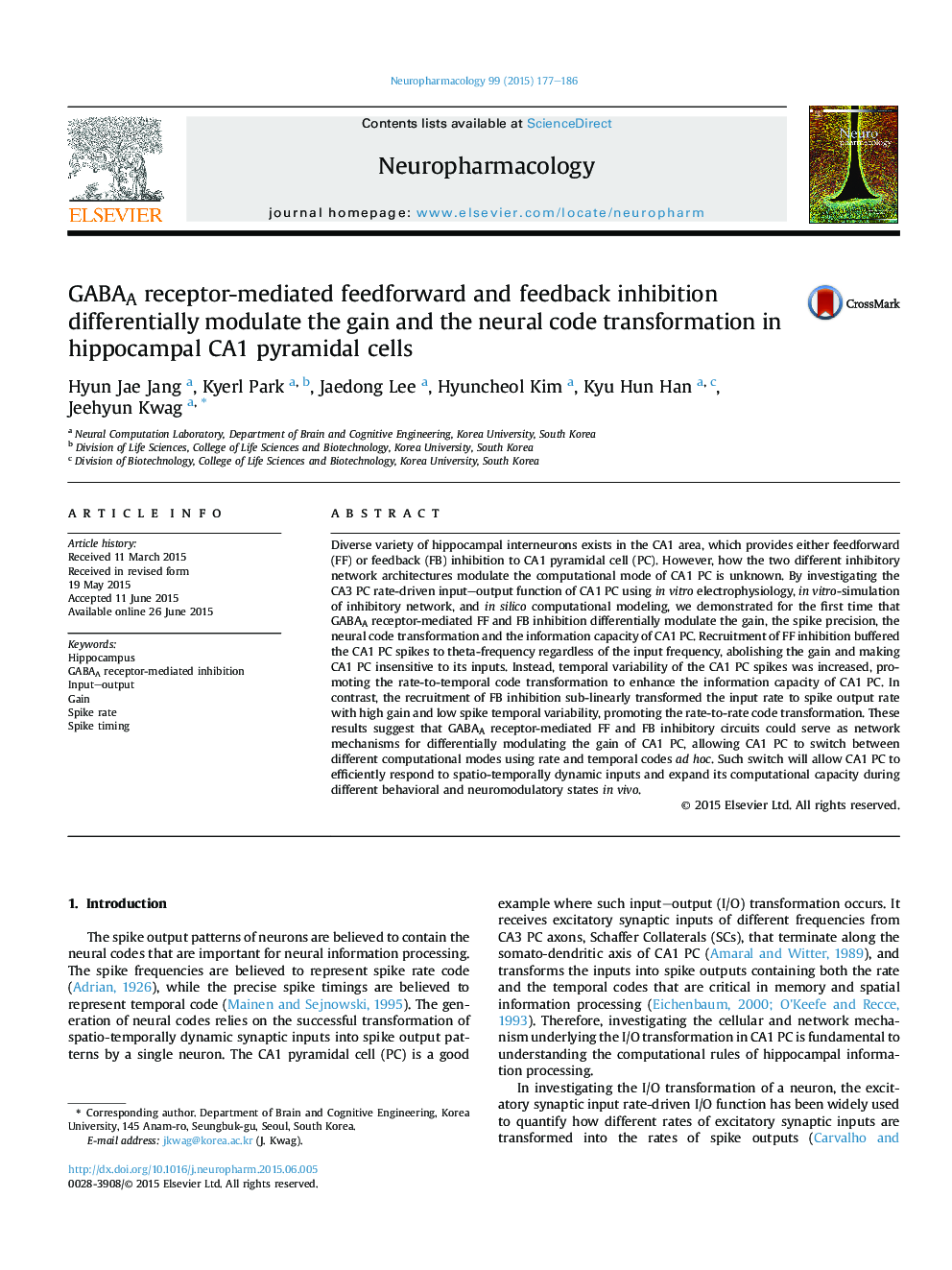| کد مقاله | کد نشریه | سال انتشار | مقاله انگلیسی | نسخه تمام متن |
|---|---|---|---|---|
| 5813771 | 1556616 | 2015 | 10 صفحه PDF | دانلود رایگان |

- Feedforward and feedback inhibition-mediated control of the gain and neural code transformation in hippocampal neurons were investigated.
- Feedback inhibition sub-linearly increased the gain and decreased the spike variability of hippocampal CA1 pyramidal neurons.
- Feedforward inhibition decreased the gain and increased the spike variability of hippocampal CA1 pyramidal neurons.
- Feedforward and feedback inhibition facilitated rate-to-rate and rate-to-temporal code transformation, respectively.
- Feedforward inhibition increased the information capacity ofhippocampal CA1 pyramidal neurons by modulating the gain.
Diverse variety of hippocampal interneurons exists in the CA1 area, which provides either feedforward (FF) or feedback (FB) inhibition to CA1 pyramidal cell (PC). However, how the two different inhibitory network architectures modulate the computational mode of CA1 PC is unknown. By investigating the CA3 PC rate-driven input-output function of CA1 PC using in vitro electrophysiology, in vitro-simulation of inhibitory network, and in silico computational modeling, we demonstrated for the first time that GABAA receptor-mediated FF and FB inhibition differentially modulate the gain, the spike precision, the neural code transformation and the information capacity of CA1 PC. Recruitment of FF inhibition buffered the CA1 PC spikes to theta-frequency regardless of the input frequency, abolishing the gain and making CA1 PC insensitive to its inputs. Instead, temporal variability of the CA1 PC spikes was increased, promoting the rate-to-temporal code transformation to enhance the information capacity of CA1 PC. In contrast, the recruitment of FB inhibition sub-linearly transformed the input rate to spike output rate with high gain and low spike temporal variability, promoting the rate-to-rate code transformation. These results suggest that GABAA receptor-mediated FF and FB inhibitory circuits could serve as network mechanisms for differentially modulating the gain of CA1 PC, allowing CA1 PC to switch between different computational modes using rate and temporal codes ad hoc. Such switch will allow CA1 PC to efficiently respond to spatio-temporally dynamic inputs and expand its computational capacity during different behavioral and neuromodulatory states in vivo.
Journal: Neuropharmacology - Volume 99, December 2015, Pages 177-186